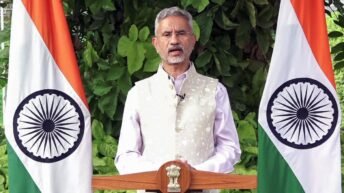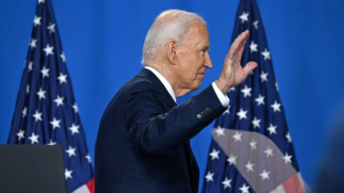|
Listen to article
Getting your Trinity Audio player ready...
|

One of the endemic conflicts of the last century the territorial dispute between Armenia and Azerbaijan has flared up again and no permanent resolution is in sight as both states remain adamant about their respective claims. Armenia an ancient and formerly much larger ‘Indo-European’ Christian nation regards Nagorno-Karabakh, Artsakh in Armenian, as the heart of its homeland even though it is, according to boundaries drawn by Stalin in the early years of the USSR, part of Azeri territory.
The Azeris, a Turkic people which also make up a substantial portion of the population of Iran have never accepted the existence of the self-proclaimed but internationally unrecognised Republic of Artsakh and are committed to reasserting their sovereignty over the region and resettling the Azeris who were expelled en masse by the Armenian majority in the wake of prior wars.
The Caucasus is a complex mosaic of many overlapping and interwoven ethnic groups, states, faiths and languages which have been clashing and coexisting willy nilly for millennia, often under the rival supremacies of the great neighbouring Turkish and Iranian empires.
From the late 18th century onwards Russia became the dominant power in the rugged mountain region and acted as the protector of the beleaguered Armenians. The Tzars gradually encroached on the domain of the Persian Zand and Qajar Shahs and their armies detached northern Azerbaijan to the west of the Caspian from its Southern part in 1813 by the treaty of Gulistan. In 1828 they annexed the territory of what is now the Republic of Armenia.
By the beginning of the 20th century, many Armenians left under Ottoman rule, fleeing poverty and their oppressive masters had settled all over the world and had risen to positions of great wealth and distinction in Russia and in other welcoming lands such as France, Italy and the Americas.
The Bolshevik revolutionary movement attracted the support of many independence-seeking Armenians who became communists and in the wake of the 1917 revolution gave birth to the Soviet Republic around their historic capital Yerevan. The Western and Southern Armenian populations which had sought to break away from Turkey since the eighteen seventies were uprooted and massacred by Ottoman troops and Kurdish irregulars in the service of the Sultan during various operations between the years 1894 and 1923.
What is now known as the Armenian genocide steeled the community to fight tooth and nail for the preservation of its national identity, language and religion. The far-flung Armenian diaspora is highly cohesive and solidary. They support their country of origin in its war with money, lobbying campaigns and by volunteering to serve in the army.
On the other hand, the Azeris are oil-rich and provide a vital energy supply to Turkey and the West. They are hence able to finance their troops with modern materiel, some of which is procured from Israel, a close partner of the Baku government. Reports highlight that Muslim Jihadi fighters, possibly funded and shipped by Turkey, have flocked to the Azeri banner from Syria, Iraq and the Maghreb to the dismay of both Iran and Russia.
The conflict can thus go on for a long time but it poses serious risks of spreading to the wider Middle Eastern region. Armenia is part of the Russian-led Collective Security Treaty Organization (CSTO) and as such is entitled to the support of Moscow (which maintains two airbases on its soil) and the other CSTO members if it is attacked whereas Azerbaijan is closer to NATO and particularly to the USA which has long seen the strategically situated Caspian-littoral state as a valuable asset. Turkey which claims the leadership of the Turkic peoples strongly backs the Azeri cause. Iran has close relations with Armenians who have lived in symbiosis with the Persians for thousands of years. On the other hand, Tehran regards the regime of Azeri President Ilham Aliev (whose father was once the Director-General of the Soviet KGB in Moscow) as an ally of Israel, rumoured to have plans to use airbases in the country to attack Iranian targets in case of need.
Armenia conversely has helped the Islamic Republic to bypass US and EU sanctions by acting as a conduit for Iran’s imports. To this complex equation, we must add Moscow’s interest in keeping good relations with Azerbaijan, in which it invested sustained diplomatic efforts while standing by Armenia. The fiery Prime Minister of the latter state Nikol Pashinyan is seen as a pro-western liberal as well as a bellicose nationalist committed to not conceding an inch of Karabakh.
Indeed Armenian bombings of relatively remote Azeri targets such as the city of Ganja (home of the legendary Persian poet Nizami) are seemingly intended to goad Baku to attack the Armenian mainland, thus forcing Russia and perhaps even NATO to intervene in Yerevan’s favour, probably triggering a military reaction from Turkey. Yet many Armenians and Azeris are prominent constituents of the socio-economic fabric of the Russian Federation where both states have influential domestic lobbies so Moscow is reluctant to take a firm stand on either side. However the downing of a Russian helicopter by Azeri forces on Monday 9th November may have tilted the balance. The Kremlin has announced its decision to get more closely involved and an agreement was signed on November 9th between the warring parties on advantageous terms for Baku which had made decisive gains in recent days. Armenians had to concede that they were outmanoeuvred and outgunned. Peacekeeping will be ensured by Russian and possibly Turkish forces seconded by UN monitors.
Although India is relatively far away, it has very old links with the two warring neighbours. The part played by Armenians in India’s trade and finance over the centuries is too well known to need more than a cursory recall. Large and opulent Armenian communities helped Indian port cities such as Surat, Madras and Kolkata grow into magnets for manufacturing and transoceanic commerce while Baku, Azerbaijan’s capital, site of a venerable Zoroastrian sanctuary hosted in times past a big Indian trading colony, being a hub and a Caspian port on the land route from the Persian Gulf and the Arabian Sea to Astrakhan and Kazan along the Volga, upto the northern emporium of Novgorod. The connections with India are still remembered in Armenia as well as in Azerbaijan and should be further revived once peace returns to the region and the ancient South-North corridor is reopened.






Nice informative article. However, as per the current strong geopolitical forces trending and active in central Asia is China’s effort to forge bridges bwtween European and Asian markets through its BRI with a firm view of consolidating and position and hold over the “heartland” of Eurasian “natural market” thereby legitimising its global ascendance towards global primacy at the cost of US and at the cost of receded Russia.
Threrfore, the route to Chinese ambitions in the area personified by “Chinese BRI”, “Chinese Heartland project” and “Chinese Unifified Eurasian Market Projects “ all cross through the conflict Zones of Ajarbaijan and Armenia . Therefore underestimating or overlooking the Chinese interests or stakes in the stability of this region I find hard to ignoe.
Therefore , my question is what is Chinese role or stakes in this conflict and on which side of the conflicting line China stands and does China playing directly or by proxy ( using its influence on Russian, Turkey and Iran) any role in coflagrating or containing / resolving this conflict ?
China has kept a very low profile in the war between Armenia and Azerbaijan although its economic interests are greater in Azerbaijan, an oil and gas exporter which is becoming a bridgehead on the Caspian for the BRI and related projects. Armenia is landlocked, resource poor and is bypassed by the pipelines and strategic Caspian-Black Sea routes and North South Corridors which connect iran, Turkey, Russia and Eurasia. Russia has taken effective control of the Karabakh region and has now greater influence on both much weakened Armenia and relatively victorious Azerbaijan. Moscow must now use its clout to fend off the increasing ambitions of China and Turkey https://www.vijayvaani.com/ArticleDisplay.aspx?aid=5589 in the Caspian/Caucasus region. Azerbaijanis also playing the Turks, the Russians, the Americans, the Chinese and the Europeans against one another but Moscow now has the strategic upperhand and Georgia increasingly leaning towards Russia.